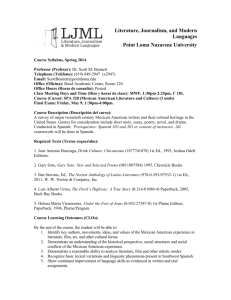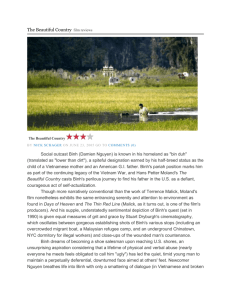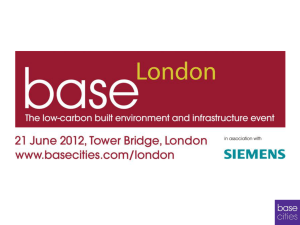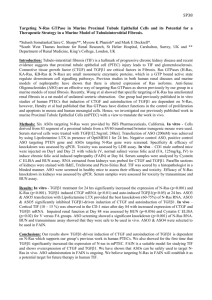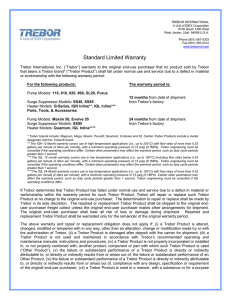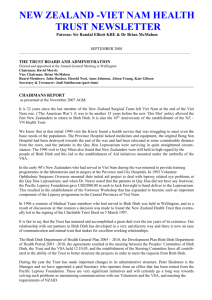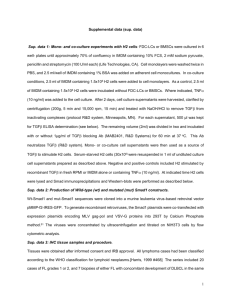Chapter+2 - Berkeley Women in Business
advertisement
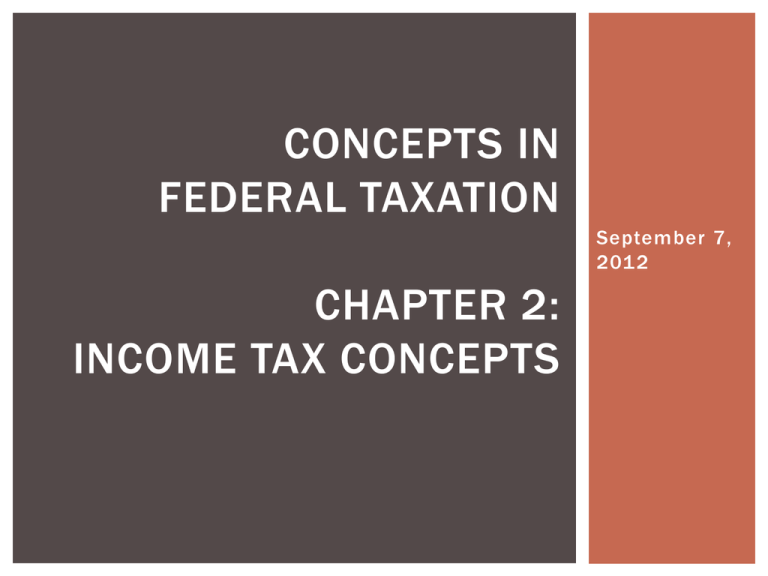
CONCEPTS IN FEDERAL TAXATION September 7, 2012 CHAPTER 2: INCOME TAX CONCEPTS HOMEWORK PROBLEMS Problems Assignment #2 Chapter 2 P24, 29, 32, 56 #24 Doiko Corporation owns 90% of the stock in Nall, Inc. Trebor owns 40% of the stock of Doiko. Trebor’s sister owns the remaining 60% of Doiko. During the current year, Trebor purchased land from Nall for $43,000. Nall had purchased the land for $62,000. Write a memorandum to the controller of Nall, Inc., explaining the potential tax problem with the sale of the land to Trebor. #24 Doiko Corporation and Nall, Inc. are related parties because Doiko owns more than 50% of the stock in Nall. Although Trebor directly owns only 40% of Doiko, he is deemed to own his sister’s Doiko shares for purposes of the related party rules. Therefore, Trebor is deemed to control Doiko, which controls Nall. This makes Trebor and Nall related parties. Because the sale to Trebor results in a $19,000 loss, Nall will not be allowed to deduct the loss because Trebor is a related party. #29 Binh owns several businesses. The total income generated by all his businesses puts him in the highest marginal tax bracket. Seeking to lower the overall tax on his business income, Binh is thinking of creating two S corporations and putting half his business interests in each. Will this arrangement lower his overall tax? Write a letter to Binh in which you explain the tax ef fects of organizing his businesses as two S corporations. In your letter, suggest an alternative plan that might lower his tax. #29 Splitting his business income into two separate S corporations will not produce any tax savings because S corporations are conduit entities. The income from each S corporation will flow through the corporation and be taxed to Binh. Therefore, Binh’s taxable income will remain the same. One possible way for Binh to take advantage of marginal tax rate differentials is to organize his businesses into a C corporation and pay himself a salary. The salary will be income for Binh and deductible by the corporation. This will split the income into two taxable streams - Binh at individual rates and the corporation at corporate rates. Because corporations are taxed at lower rates than individuals on up to $75,000 of income, an optimal planning strategy will set Binh’s salary such that the corporate taxable income is $75,000 with the remaining income taxed to Binh. #32 Esmeralda is an attorney. Before 2012, she is employed by the law firm of Ellis and Morgan (E&M). Esmeralda is not a partner in E&M; her compensation consists of a fixed salary and a percentage of any fees generated by clients she brings or refers to the firm. In January 2012, she becomes a partner in the law firm of Thomas, Gooch, and Frankel (TGF). As a partner, Esmeralda agrees to turn over to TGF any income from the practice of law from the date of her admittance to the practice. In leaving E&M, it is agreed that she will continue to receive her percentage of fees from clients she referred to E&M during her employment there. In return, Esmeralda agrees that, upon request she will consult with E&M attorney’s regarding these clients. During 2012, she consults with 2 of her former E&M clients and receives $12,000 from E&M per their agreement. The $12,000 consists of $10,000 as a percentage of fees for client referrals after she left E&M and $2,000 as a percentage for work done before she left E&M. Esmeralda turned the $12,000 over to TGF per her partnership agreement. Write a letter to Esmeralda explaining whether she is taxed on the $12,000 she receives from E&M. #32 As a partner of TGF, Esmeralda is entitled to her share of the partnership income per the partnership agreement. Any amounts she earns after entering the TGF partnership are considered to be partnership income. The question to be resolved regarding the $12,000 payment is whether the assignment of income doctrine applies. If the $12,000 is an amount that she had earned prior to entering the partnership, she cannot escape taxation by assigning the payment to TGF. the $2,000 payment for work done prior to leaving E&M had been earned before entering the TGF partnership and was taxable to Esmeralda per the assignment of income doctrine . The $10,000 in fees received for client referrals after leaving E&M were held to have not been earned by Esmeralda prior to leaving E&M and were taxable to the TGF partnership. #56 Sidney lives in Hayes, Kansas. He owns land in Cotulla, Texas, that he inherited from his father several years ago. The land is unimproved and has never produced income. On January 26, 2012, Sidney receives a statement of delinquent taxes on the property for 2009, 2010, and 2011 for $120. On February 10, 2012, Sidney and his wife, Ellen, start to drive to Cotulla; they arrive on February 20 and pay the taxes on the same day. The cost of the trip for Sidney and Ellen is $ 450. Sidney and Ellen would like to deduct the cost of the trip. Write a letter to Sidney and Ellen in which you explain what they can deduct. #56 b. How would your answer change if Hank had contributed $42,000 to the pension plan? Assume that the $42,000 had been included in Hank’s income (i.e., he has already paid tax on the $42,000). Because Hank has already been taxed on the $42,000 when it was contributed to the plan, it will not be taxed when it is withdrawn from the plan (i.e., capital recovery). Using the annuity exclusion ratio, Hank will exclude $200 ($42,000 ÷ 210) of each payment. His gross income from the pension is $2,800 ($400 x 7). #56 To be deductible, an expenditure must have a business purpose. This means that the primary motive for the expenditure is to make a profit . The tax law allows the deduction of all ordinary and necessary trade or business expenses and production of income (investment) related expenses . #56 Although the land is held for investment, expenditures on the land must be ordinary and necessary. The payment of the property taxes is ordinary and necessary and would be deductible. The deductibility of the cost of the trip depends on whether the trip is ordinary and necessary. Making such a lengthy trip is not the ordinary means of paying property taxes. In addition, taking 10 days to make the trip indicates that the primary purpose of the trip was personal. Therefore, the cost of the trip does not have a business purpose and is not deductible, even though it relates to income producing property.


